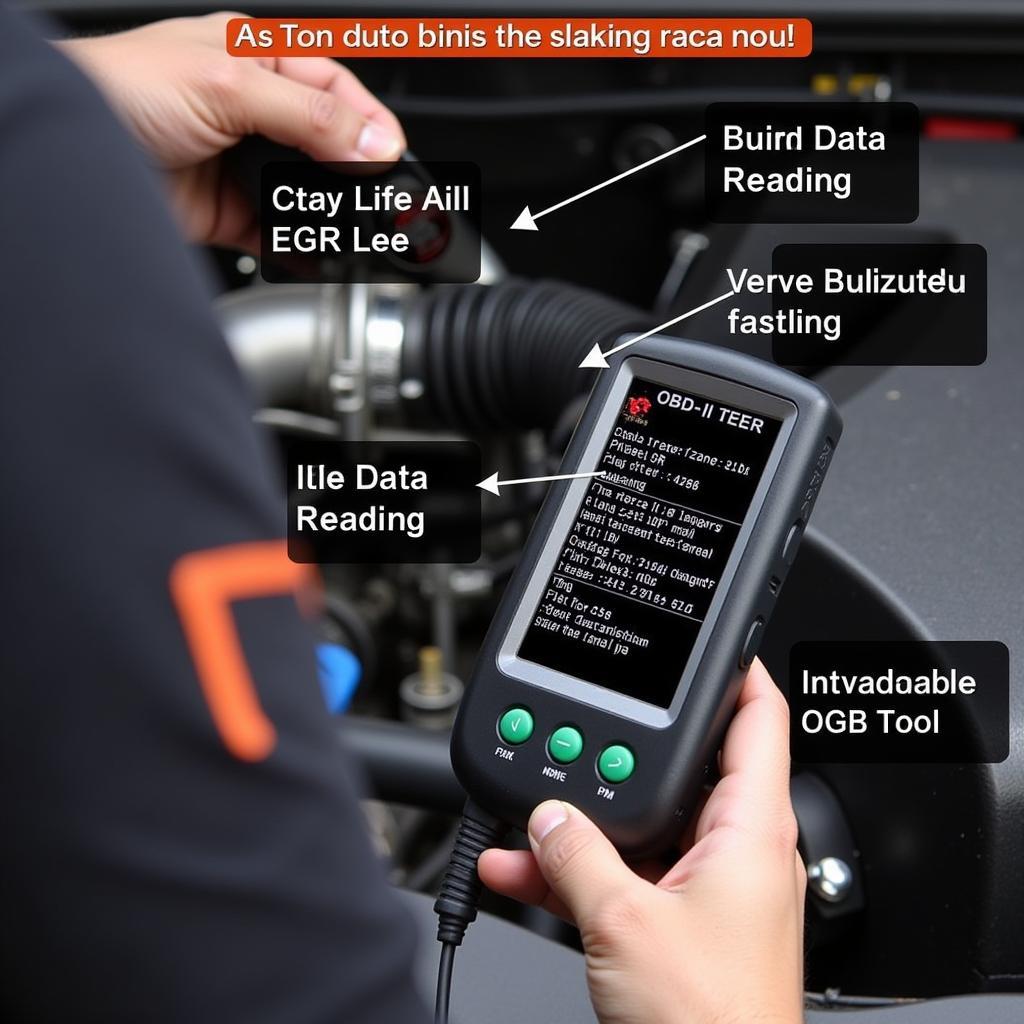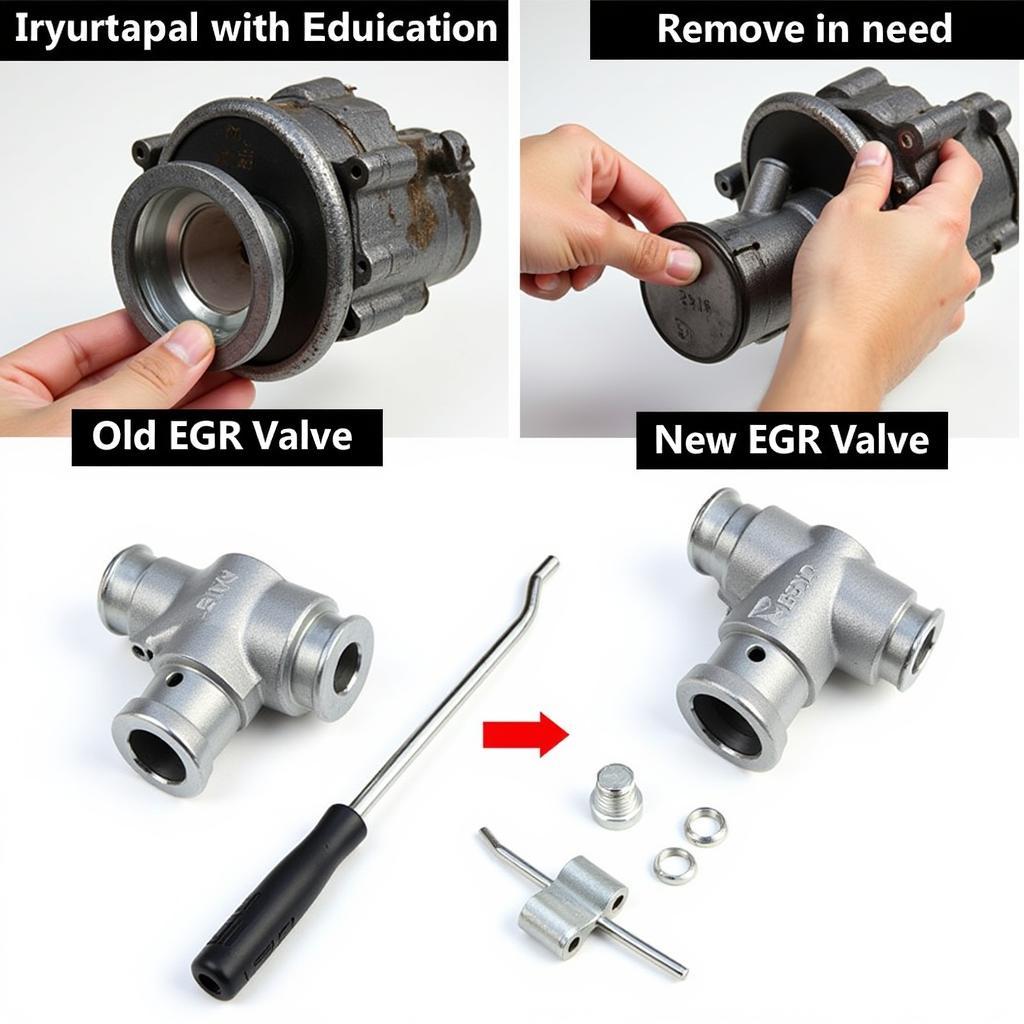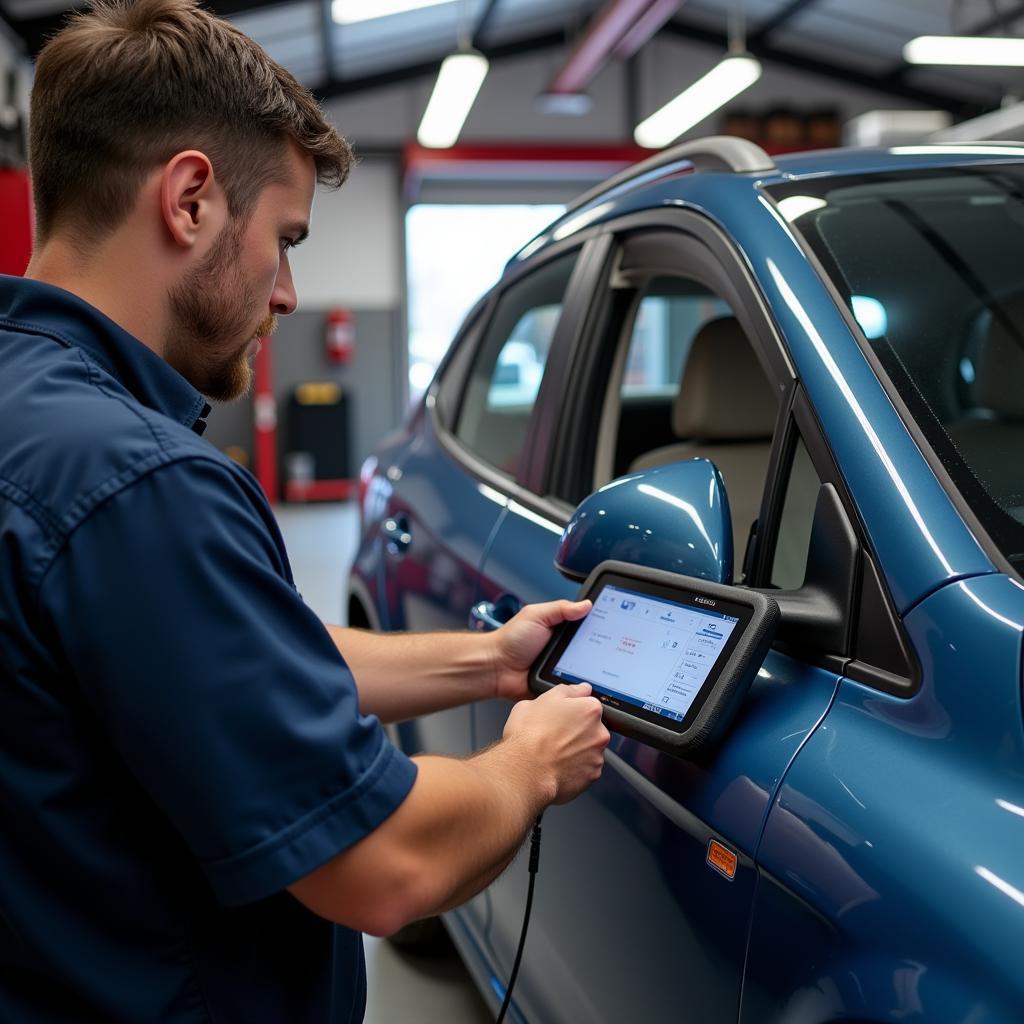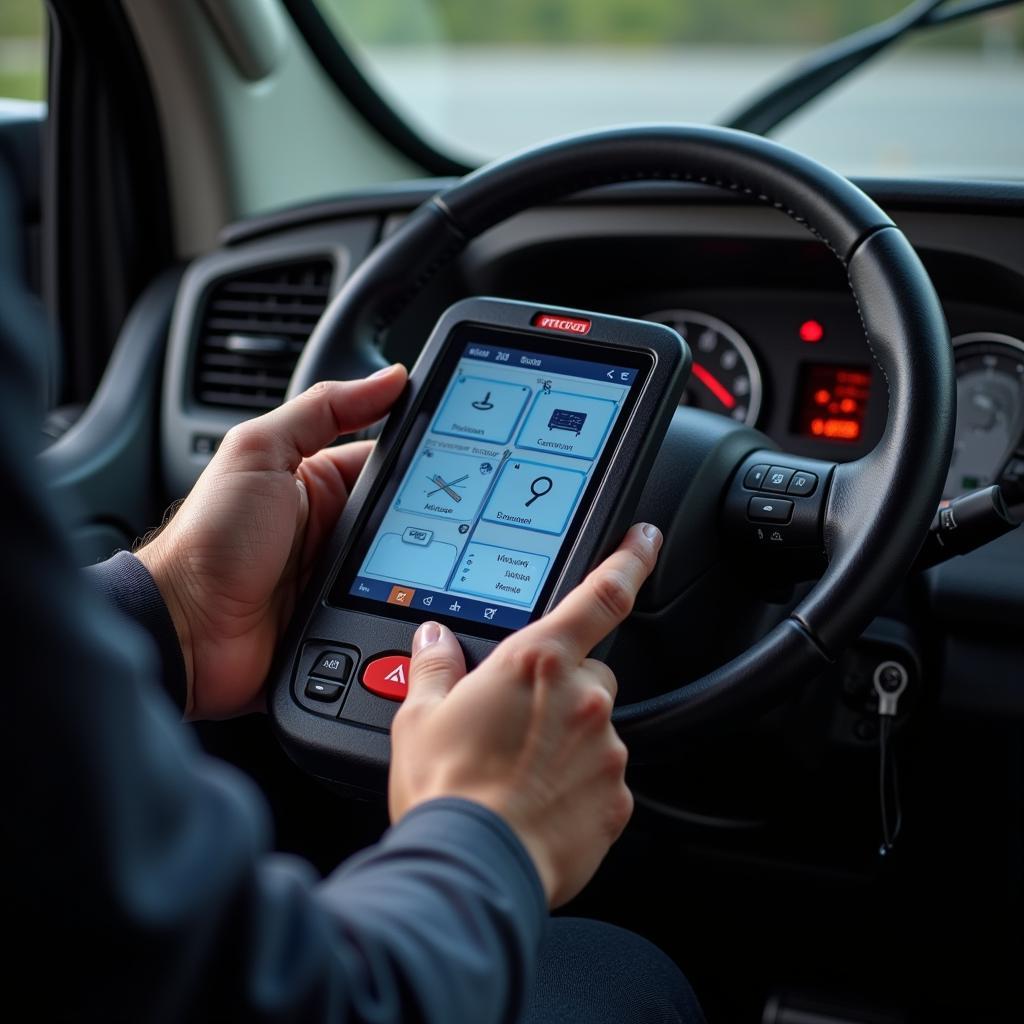Testing an EGR valve with a scan tool is a crucial diagnostic step for identifying and resolving various engine performance issues. A malfunctioning EGR valve can lead to reduced fuel efficiency, increased emissions, and even engine damage. This guide will provide you with a comprehensive understanding of how to effectively test your EGR valve using a scan tool, empowering you with the knowledge to diagnose and address potential problems.
If you’re looking to enhance your diagnostic capabilities, a powerful scan tool can be invaluable. Check out our guide on the best scan tool for diesel pickups for some excellent options.
Understanding the EGR System and Its Importance
The Exhaust Gas Recirculation (EGR) system plays a vital role in reducing harmful nitrogen oxide (NOx) emissions. It does this by recirculating a portion of exhaust gases back into the intake manifold, effectively lowering combustion temperatures. This, in turn, minimizes the formation of NOx. A properly functioning EGR system is essential for maintaining optimal engine performance, fuel efficiency, and environmental compliance.
Common EGR Valve Problems and Symptoms
A faulty EGR valve can manifest in various ways, impacting engine performance and drivability. Common symptoms include rough idling, engine misfires, reduced fuel economy, increased emissions, and even a noticeable decrease in engine power. Sometimes, the check engine light might illuminate, accompanied by specific diagnostic trouble codes (DTCs) related to the EGR system.
Identifying Symptoms of a Failing EGR Valve
Recognizing the symptoms of a failing EGR valve is the first step towards a successful diagnosis. These symptoms can range from subtle performance hiccups to more noticeable issues like stalling or hesitation. Paying attention to these signs can save you time and money in the long run.
Testing the EGR Valve with a Scan Tool: Step-by-Step Instructions
Using a scan tool to test your EGR valve is a relatively straightforward process, but requires careful attention to detail. Here’s a step-by-step guide to help you through the process:
- Connect the Scan Tool: Begin by connecting your scan tool to the vehicle’s OBD-II port, typically located under the dashboard on the driver’s side.
- Turn the Ignition On: Turn the ignition key to the “on” position, but do not start the engine. This powers up the scan tool and allows it to communicate with the vehicle’s computer.
- Access the EGR System: Navigate through the scan tool’s menu to access the EGR system. The exact steps may vary depending on the specific scan tool model.
- Command the EGR Valve: Most scan tools allow you to command the EGR valve to open and close. Observe the EGR valve position sensor (EVP) readings on the scan tool. The readings should change as you command the valve.
- Monitor Live Data: Monitor live data parameters like EGR valve position, EGR error, and EGR flow rate while the engine is running. This can provide valuable insights into the valve’s operation under real-world conditions.
You can further refine your diagnostic approach using a contribution test with your scan tool. Learn more about how to perform a scan tool contribution test.
Interpreting Scan Tool Readings
Interpreting the data from your scan tool is crucial for accurate diagnosis. Inconsistencies between commanded EGR position and actual EVP readings indicate a potential problem with the EGR valve or its related components.
 Testing EGR Valve with Scan Tool
Testing EGR Valve with Scan Tool
“A scan tool is an essential tool for any serious DIY mechanic. It allows you to delve deeper into your vehicle’s systems and pinpoint issues that might otherwise go unnoticed,” says John Miller, a seasoned automotive technician with over 20 years of experience.
Beyond the Scan Tool: Other EGR Testing Methods
While a scan tool is a valuable diagnostic tool, other methods can provide additional insights into the EGR system’s health. These include visual inspection of the EGR valve and related components, vacuum testing, and backpressure testing.
Learn how to test a MAP sensor with a scan tool for a comprehensive understanding of another critical sensor in your engine’s management system.
When to Replace the EGR Valve
If your testing reveals a faulty EGR valve, replacement is usually the most effective solution. Continuing to drive with a malfunctioning EGR valve can lead to further engine damage and increased emissions.
 Replacing a Faulty EGR Valve
Replacing a Faulty EGR Valve
Conclusion
Testing your EGR valve with a scan tool is a vital step in maintaining your vehicle’s performance and longevity. By following the steps outlined in this guide and understanding how to interpret the scan tool readings, you can effectively diagnose and address potential EGR valve problems. This empowers you to keep your engine running smoothly and efficiently for years to come. For further assistance or expert advice, feel free to contact us at ScanToolUS. Our phone number is +1 (641) 206-8880 and our office is located at 1615 S Laramie Ave, Cicero, IL 60804, USA.
“Regular maintenance and timely repairs are key to preventing costly engine problems down the line. Don’t underestimate the importance of a properly functioning EGR system,” advises Maria Sanchez, a certified automotive instructor with extensive experience in vehicle diagnostics.
FAQ
- What does the EGR valve do? The EGR valve recirculates exhaust gases back into the intake manifold to lower combustion temperatures and reduce NOx emissions.
- How can I tell if my EGR valve is bad? Symptoms of a bad EGR valve include rough idling, engine misfires, reduced fuel economy, and increased emissions.
- Can I clean my EGR valve instead of replacing it? Cleaning can sometimes resolve issues, but replacement is often the more effective solution for a failing EGR valve.
- What tools do I need to test an EGR valve? A scan tool is the primary tool for testing an EGR valve, but other tools like vacuum pumps and pressure gauges can also be helpful.
- Is it safe to drive with a bad EGR valve? Driving with a bad EGR valve can lead to further engine damage and increased emissions. It’s best to address the issue promptly.
- How much does it cost to replace an EGR valve? The cost varies depending on the vehicle make and model, but typically ranges from $200 to $500.
- Where can I find a compatible scan tool for my vehicle? You can find compatible scan tools at auto parts stores, online retailers, or by checking out our recommended scan tools for 96 ford vehicles.



